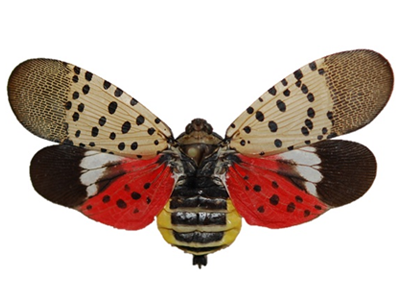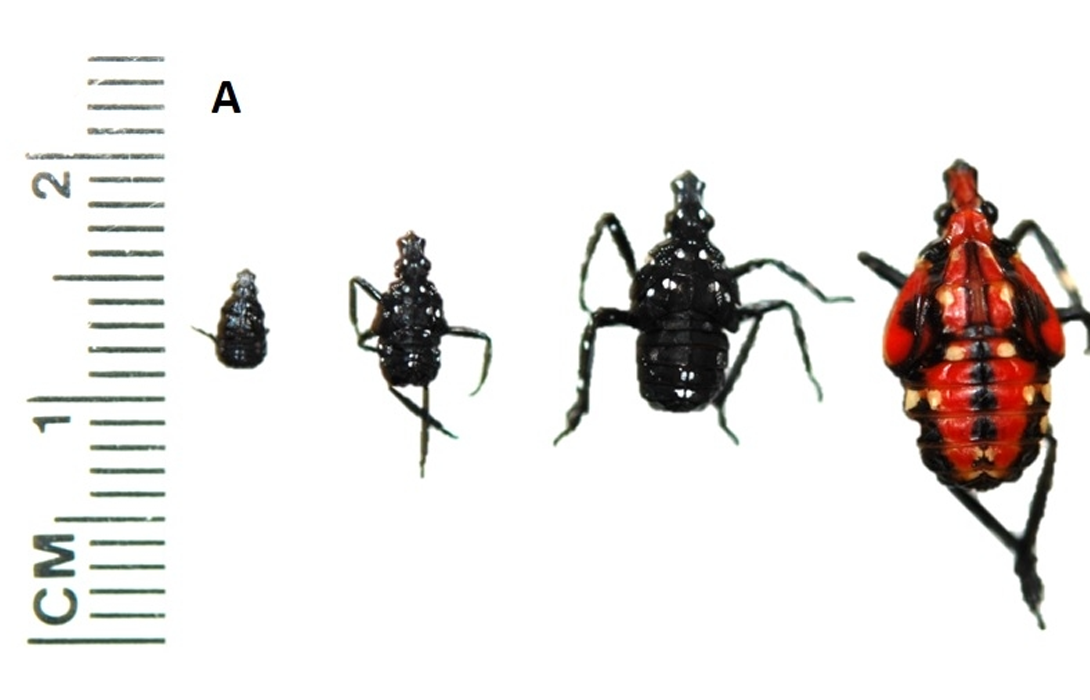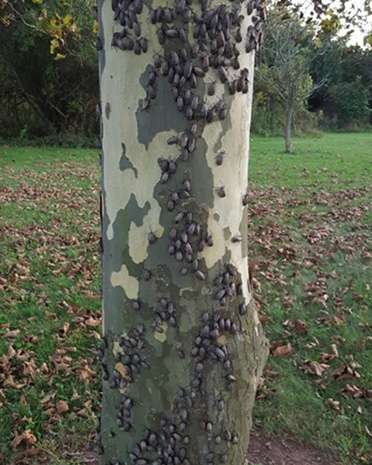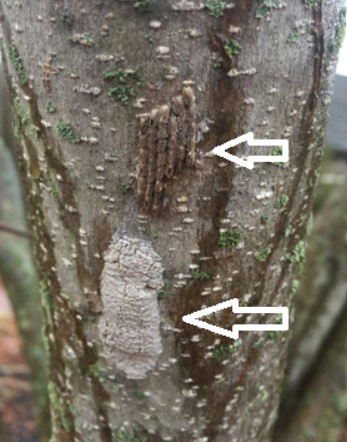Spotted Lanternfly
The spotted lanternfly (Lycorma delicatula–SLF) is a planthopper arriving from China, Taiwan, Japan, and Vietnam and was first discovered in New York City in 2019. Since Spotted Lanternflies are newcomers to North America, we’re still learning about them and how they interact with our ecosystems, including city parks and farms. While they can infest trees, SLF are not considered a widespread threat to our city’s forests. However, because SLF feeds on a wide range of agricultural crops, including walnut, grapes, hops, apples, blueberries, and stone fruits, the insect is considered a significant threat to agriculture. The Tree of heaven (Ailanthus altissima) is its preferred host tree.
How SLF is affecting our ecosystems and landscapes
SLF feeds on over 70 species of trees. To feed, they pierce through the bark and suck on the sap. They prefer Tree of heaven saplings and will also feed on black walnut, American beech, red maple, porcelain berry, and staghorn sumac. Their feeding alone does not usually kill trees, but it can, over time, weaken plants. Their feeding leaves behind a sticky residue called “honeydew” that can attract other insects and promote the growth of sooty mold. This fungus doesn’t seem to be an issue for the long-term health of the plants.
What is NYC Parks Doing About Spotted Lanternflies?
- Caring for infested trees will follow Parks’ Tree Risk Management program — pruning and removing trees as they pose a risk to the public.
- Parks is participating in an interagency working group with federal, state, and local agencies to coordinate surveying and treatment approaches.
- Parks is not currently considering widespread treatment due to uncertainty of the success of chemical treatments and the prohibitive cost; however, we may treat limited high-value trees if deemed necessary.
- NYC Parks does not endorse or permit the use of traps to reduce SLF numbers, as they can trap and harm other insects, birds, or mammals. Traps can be forgotten, which can kill or girdle a tree if left on for too long.
How You Can Help
In the past, NYC Parks instructed New Yorkers to squish the insect. However, we now know that SLF has become established in North America and is here to stay. We can still help slow their movement, giving park managers and farmers more time to prepare for this new insect and its impact on trees, crops, vehicles, and buildings.
- Learn about SLF. There are several stages to the SLF life cycle; nymphs look different from adults and often behave differently. Knowing when in the year SLF lays eggs helps know when to look for them. While SLF are influencing our ecosystems and changing our landscapes, they are interesting insects in their own right, too!
- Report sightings outside of NYC. SLF is established in NYC, so there’s no need to document sightings. Researchers still need help tracking their movements across NY State. If you find SLF in a place where you think they haven’t been seen before, take a picture of the insect or egg masses and send its location to NY State by emailing spottedlanternfly@agriculture.ny.gov or filling out the online form.
- Look before you leave. Make sure you’re not carrying eggs or insects. Eggs are laid on materials, including vehicles, outdoor furniture, and firewood. The nymphs and adults are also professional hitchhikers, so double-check your items. Check out this guide from the US Department of Agriculture [PDF] on possible hiding places for SLF egg masses.
- Remove egg masses. If you find egg masses and choose to destroy them you can scrape the mass into a bucket of hot, soapy water or a baggie/jar of hand sanitizer. Each egg mass contains between 30-50 eggs on average.
- Kill adults and nymphs. If you choose to kill adults and/or nymphs, you can stomp on them with your foot or squish them between two leaves. There is no conclusive evidence that killing individuals significantly reduces their populations.
- Share this knowledge with others. Sharing this information can help others make informed decisions as to how or whether they would like to do something about SLF.
Photos from the USDA



